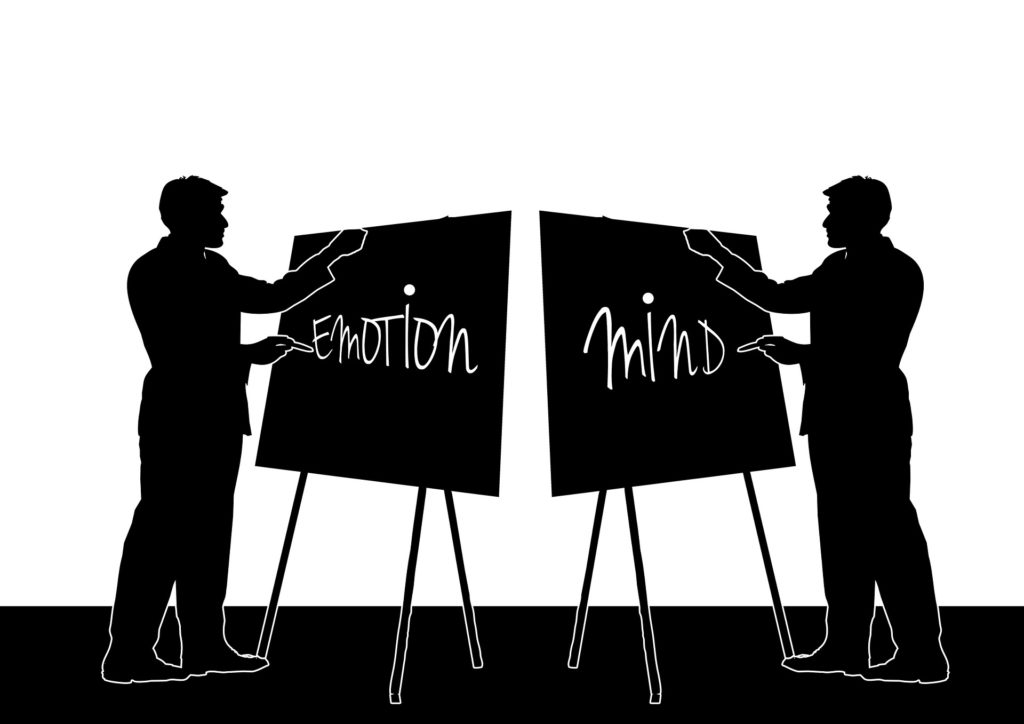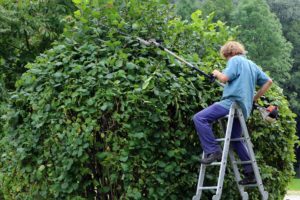Jerome Hart, from DuPont Sustainable Solutions, talks about some measures to counteract risky ‘instinctive’ behaviour.
 Routines breed complacency. That poses a danger when it comes to instinctive decision-making both at home and at work. How often do you operate on auto-pilot when carrying out a task you have done day in day out for years? You may be bored, pre-occupied, tired or distracted, so habitual behaviour is even more likely to take over. You will believe you are secure because there are safeguards or because nothing has ever happened to you in that situation before, but just because something feels safe, does not mean there is no risk. If you have a flat tyre on a narrow country lane with tall hedges, would you stop and change the tyre or call your breakdown service? Changing it yourself is faster, but it is also more risky.
Routines breed complacency. That poses a danger when it comes to instinctive decision-making both at home and at work. How often do you operate on auto-pilot when carrying out a task you have done day in day out for years? You may be bored, pre-occupied, tired or distracted, so habitual behaviour is even more likely to take over. You will believe you are secure because there are safeguards or because nothing has ever happened to you in that situation before, but just because something feels safe, does not mean there is no risk. If you have a flat tyre on a narrow country lane with tall hedges, would you stop and change the tyre or call your breakdown service? Changing it yourself is faster, but it is also more risky.
Repeated positive experiences tend to dull people’s perception of risk. Take for instance, the operative who has got used to removing a blockage from a machine without shutting it down because he has never had a problem over a number of years. Labelling this behaviour as ‘unsafe’ when it has been performed hundreds or perhaps even thousands of times without a negative outcome is quite a challenge. In the operative’s mind, the numerous benefits of removing the blockage without locking out – continued production, faster resolution of the problem, no need to explain to the supervisor why performance is lower than usual – outweigh the perceived risk. Actual experience is at odds with rules and regulations. However, just because something feels safe, does not mean there is no risk.
In a previous article for SHP Online, we saw that most people’s decision-making process is automatic, below the threshold of our full awareness. Adults make thousands of decisions every day, many of them unconsciously. Even if only 1% of them are risky decisions, you are still putting yourself in danger several times a day. So how does that play out if you work in a team of 10 people who are doing the same? What can businesses and individuals do to ensure decision-making is more deliberate and therefore safer?
Risk perception and risk awareness
Automatic decision-making tends to take over in situations that are familiar or perceived to be safe. Perhaps that is the reason why injuries are 88% more likely to occur in a perceived ‘safe’ job than in one that is considered to be dangerous. The reason may be that people rely too much on an organisation’s safety practices to protect them from hazards. Because they feel safe, they do not feel the need to take precautions independently.
However, even the most efficient safety systems and behavioural safety training cannot prevent the effect past experiences, motivation and feelings of individuals have on their decision-making. Humans are natural risk takers but we are at liberty to choose the risks we take. It is impossible to avoid risks entirely, but we can control how we react to them. Knowing that cognitive biases – such as a focus on outcomes rather than risks – influence our decision-making, how can we ensure we make more deliberate, conscious decisions rather than operating on auto-pilot? It is a question of distinguishing between risk perception and risk awareness.
Clearly, there is a difference between initial risk perception and genuine risk awareness. If perceived risks are not high, individuals are likely to tolerate situations as they are. This is where traditional safety practices, rules and procedures, developed from a logical perspective, fall down as they fail to account for how we perceive, interpret, or respond to risk in real time, under real circumstances. Organisations therefore need to address risk perception and give employees the tools to develop greater awareness of actual risks.
The Risk Scale
 As we have seen, we often misclassify situations as safe or unsafe. A better understanding of risk allows us to appreciate the uncertainties any given situation presents, as well as their potential consequences. This should then allow us to think about how to improve the odds. At DuPont, we use a risk scale to identify risk and classify the risk level. Before beginning a job, we familiarise the team with the job that is to be carried out. We then ask for individual assessments of the risk level from 0-100 and record this on the risk scale. Next, we encourage a discussion with the aim of reaching a consensus opinion on the risk. No voting or averaging is allowed. We record that jointly agreed risk level on the scale and then ask the crew for suggestions to lower it by 5-10%. Even a 5% reduction in risk can make a big difference. This methodology focuses attention on the reduction of risk, not just the risk itself, allows for others’ perspective of hazards and provides time to assess and analyse intuitive reactions. Many people to whom we introduce the risk scale tell us that they have found it so useful, quick and easy to use that they subsequently also apply it at home for activities such as hedge trimming, painting, DIY jobs, etc.
As we have seen, we often misclassify situations as safe or unsafe. A better understanding of risk allows us to appreciate the uncertainties any given situation presents, as well as their potential consequences. This should then allow us to think about how to improve the odds. At DuPont, we use a risk scale to identify risk and classify the risk level. Before beginning a job, we familiarise the team with the job that is to be carried out. We then ask for individual assessments of the risk level from 0-100 and record this on the risk scale. Next, we encourage a discussion with the aim of reaching a consensus opinion on the risk. No voting or averaging is allowed. We record that jointly agreed risk level on the scale and then ask the crew for suggestions to lower it by 5-10%. Even a 5% reduction in risk can make a big difference. This methodology focuses attention on the reduction of risk, not just the risk itself, allows for others’ perspective of hazards and provides time to assess and analyse intuitive reactions. Many people to whom we introduce the risk scale tell us that they have found it so useful, quick and easy to use that they subsequently also apply it at home for activities such as hedge trimming, painting, DIY jobs, etc.
Pause, process, proceed
The risk scale approach uses what we call the ‘Pause, Process, Proceed Tool’. The first step to avoid subconscious thinking in a work situation is to achieve better risk awareness through total observation of a situation. This allows people to gain a better perspective on the situation and spot if something is new, out of place or out of order. In order to have time to do this, it is necessary to pause and consider the risks involved in any activity. When firefighters arrive at the scene of a fire, they don’t immediately rush in. They take the time to assess the situation and look at what’s going on above (power cables? trees?), beside (e.g. other houses that could catch light because of wind direction) and inside (people or pets still in the building, hazardous materials, potential for explosion) the building.
Looking at tasks from different angles – above, below, behind and inside – allows us to see dangers that may not immediately be apparent. In a work situation this can be looking at the position of the people around you, their personal protective equipment, the tools and machinery they are using. If you are in an unfamiliar environment – like a new work setting or even on holiday – the level of risk may be different to the one you expect. So often we rely on safety mechanisms, such as car sensors, to warn us of hazards or keep us safe, that we act without thinking. Yet every year there are newspaper stories of parents who accidentally run over their children while backing out of their driveways. Perhaps pausing and looking all around could have prevented some of these accidents and changed people’s awareness of the risk level. It is therefore critical to take the time to think about why you are making a decision and whether you might be influenced by external factors, past experiences or emotions. Pausing is a critical first step to developing a mindful, conscious approach to decision-making.
After identifying possible risks, you can think about ways to manage these risks. Picture the task and risks in your mind and prepare a strategy for lowering them in the ‘Process’ step. Once you have done that, you are ready to proceed with a deliberate choice: the best risk-limiting option.
Developing risk awareness using these tools will benefit people both at work and at home. Understanding how people arrive at decisions or are likely to react in unfamiliar, unpredictable situations is key to developing an approach to help them cope in both familiar and unexpected circumstances, so they can stay safe by making the right, deliberate choice.
The Safety Conversation Podcast: Listen now!
The Safety Conversation with SHP (previously the Safety and Health Podcast) aims to bring you the latest news, insights and legislation updates in the form of interviews, discussions and panel debates from leading figures within the profession.
Find us on Apple Podcasts, Spotify and Google Podcasts, subscribe and join the conversation today!




Interesting approach. I proposed one model in my book Golden Stripes- Leadership on the High Seas, with a brief summary in my blog http://parani.org/Blog/port-or-starboard-decision-making-on-the-high-seas